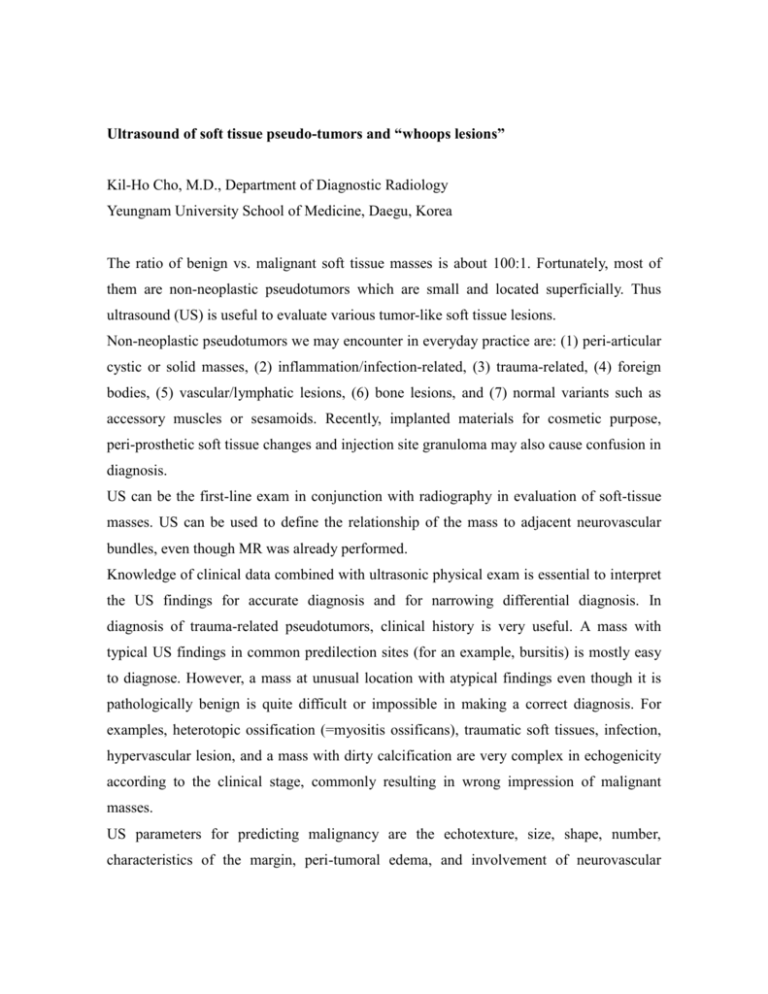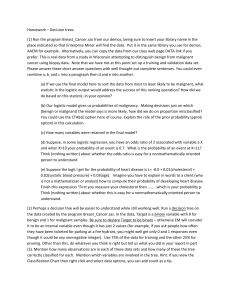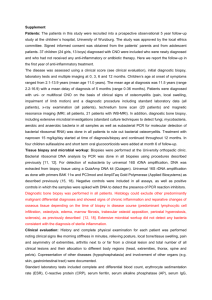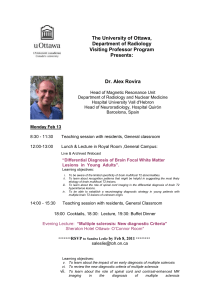Ultrasound of Soft Tissue Pseudo
advertisement

Ultrasound of soft tissue pseudo-tumors and “whoops lesions” Kil-Ho Cho, M.D., Department of Diagnostic Radiology Yeungnam University School of Medicine, Daegu, Korea The ratio of benign vs. malignant soft tissue masses is about 100:1. Fortunately, most of them are non-neoplastic pseudotumors which are small and located superficially. Thus ultrasound (US) is useful to evaluate various tumor-like soft tissue lesions. Non-neoplastic pseudotumors we may encounter in everyday practice are: (1) peri-articular cystic or solid masses, (2) inflammation/infection-related, (3) trauma-related, (4) foreign bodies, (5) vascular/lymphatic lesions, (6) bone lesions, and (7) normal variants such as accessory muscles or sesamoids. Recently, implanted materials for cosmetic purpose, peri-prosthetic soft tissue changes and injection site granuloma may also cause confusion in diagnosis. US can be the first-line exam in conjunction with radiography in evaluation of soft-tissue masses. US can be used to define the relationship of the mass to adjacent neurovascular bundles, even though MR was already performed. Knowledge of clinical data combined with ultrasonic physical exam is essential to interpret the US findings for accurate diagnosis and for narrowing differential diagnosis. In diagnosis of trauma-related pseudotumors, clinical history is very useful. A mass with typical US findings in common predilection sites (for an example, bursitis) is mostly easy to diagnose. However, a mass at unusual location with atypical findings even though it is pathologically benign is quite difficult or impossible in making a correct diagnosis. For examples, heterotopic ossification (=myositis ossificans), traumatic soft tissues, infection, hypervascular lesion, and a mass with dirty calcification are very complex in echogenicity according to the clinical stage, commonly resulting in wrong impression of malignant masses. US parameters for predicting malignancy are the echotexture, size, shape, number, characteristics of the margin, peri-tumoral edema, and involvement of neurovascular bundles &/or bone. The most reliable criterion among them in differentiation of a benign from a malignant lesion is the lesion size. When a mass is larger than 5 cm, the possibility of malignancy is relatively high (about 60%). When a mass is smaller than 3 cm, it may be benign in 88% of specificity. The better defined margin of a mass, the more likely benign. The more heterogeneous echotexture of a mass, the more likely malignant. The findings, however, are commonly overlapped and non-specific. In the situation, percutaneous needle biopsy under US-guidance is tremendously useful. It is essential to evaluate the soft tissue tumors radiologically before any invasive procedures such as biopsy. Because interpretation of the imaging findings following biopsy is much less reliable owing to local soft tissue alterations such as local inflammation, traumatic changes, and possible complications such as hematoma. With US, we can obtain unique useful information which is vague or missed on MR/CT or other imaging modalities. The objectives of US for soft tissue tumors are (1) detection of lesions, (2) diagnosis and differential diagnoses, if possible, (3) evaluation of relationship between a mass and adjacent neurovascular channels, and (4) guidance for percutaneous needle biopsy &/or aspiration for final histopathologic diagnosis.











